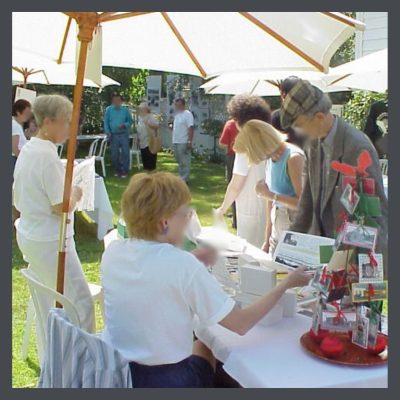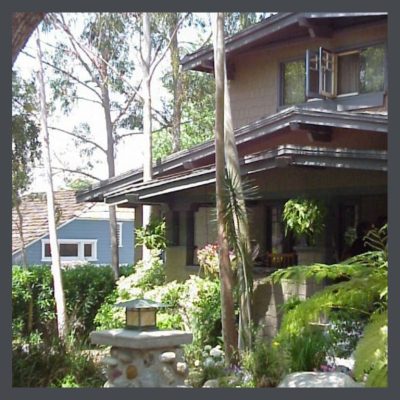 Leading a preservation committee presents the same challenges as leading any activity. To be successful at it, you need to take a look at what might motivate someone to work a 40+ hours a week job, to care for a home & a family & then to go “work” in a volunteer position in their rare & precious free moments. While their friends are enjoying the festivities!
Leading a preservation committee presents the same challenges as leading any activity. To be successful at it, you need to take a look at what might motivate someone to work a 40+ hours a week job, to care for a home & a family & then to go “work” in a volunteer position in their rare & precious free moments. While their friends are enjoying the festivities!
The prime motivator for anyone to perform any activity is purpose, the impact we want to have on the world. For example, my own purpose is twofold. I love local history & culture. In my free time, I visit museums, old house museums, research & write my blog. My first strong purpose is to better understand & preserve our built environment. My second, stronger now that I am approaching my 80’s, is to encourage & guide others in effectively participating in these activities.
The next most powerful reason to go traipsing off to a meeting when others are nestled comfortably in front of their TV’s, is to find fellowship with those who share our passions & purposes. I consider preservationists to be my peeps. When I moved from L.A. to Tampa, the head of my neighborhood preservation committee became my instant best friend. We did not need time to get acquainted, we just knew each other.
The key to leading a preservation committee is to fulfill these wants. Provide direction toward achieving purpose & the fellowship will follow.
MY EXPERIENCES
 I was fortunate to have served under some inspiring leaders. Here’s what I learned from them.
I was fortunate to have served under some inspiring leaders. Here’s what I learned from them.
1. Have a clear statement of purpose or purposes that inspires action.
My first venture in neighborhood preservation was participating in a home tour committee. The purpose of this committee was to display our beautiful, historic residential areas, hidden behind our blighted commercial corridors. We wanted to eradicate the blight. We wanted the world to love our beautiful neighborhood as much as we did.
I’m going to use this home tour committee as an example because there were several well-defined tasks & positions.
BREAKING IT DOWN
We knew what we wanted the committee to accomplish & we formulated a plan of how to do this- host a lovely tour like neighboring Bungalow Heaven in Pasadena. They were famous!
We broke down the tour purpose into its parts. We wanted:
1. Beautiful houses to show who we really were.
2. The houses to look their best.
3. Attendees to have a delightful & educational experience.
4. Attendance is huge!!!!!!!!!!
5. A nice brochure that described each house & its history & an accurate map.
6. Marketing materials that presented our neighborhood in its best light.
WHO’S WHO IN THE ZOO
 We knew what we wanted to accomplish. The next was to delineate the tasks & then assign single people or subcommittees for each task, ensuring that they knew the purpose of the subcommittee & how it contributed to the allover purpose.
We knew what we wanted to accomplish. The next was to delineate the tasks & then assign single people or subcommittees for each task, ensuring that they knew the purpose of the subcommittee & how it contributed to the allover purpose.
From knowing our purposes & copying Bungalow Heaven’s wonderful tour, we were able to see what the pieces of the home tour were that formed the whole picture & what actions were required to be done to create each piece. This guided the setting up of the structure of our committee.
Here’s are the some of positions that we had, based on what we wanted to achieve:
Chair– Oversees the committee & ensures tasks are being completed. Runs the meetings according to the agenda.
Secretary– Creates the weekly agenda. (More on that later.) Takes minutes during meetings & sends to each member.
Organizer– Creates the timeline, the training materials for each position, ensures that everyone knows what they are doing & is having a good time.
Volunteer coordinator– Builds the committee. With Chair, assigns tasks.
Treasurer– Handles income & outgoing as directed by the Chair, in coordination with the board Treasurer.
PR. & marketing– Makes to tour committee well known, attracting active members. Creates huge interest in the event through the use of compelling marketing materials.
I’m going to stop here. We had other positions, but this should give you an idea.
RUNNING THE ZOO
A well-run zoo requires each person knowing where they fit. When we first started, we were a small group & many people held many positions. What made our tour a success was that each task/position was well-defined as to purpose. The steps of how to achieve that purpose were clearly described, in sequence. Each team member knew where their tasks fit into the allover timeline.
People volunteered for things with which they were familiar & had some expertise. Our Chair had worked in the Bungalow Heaven tour for several years & had an allover idea of how a tour should go. Our Treasurer was a bookkeeper by vocation. Our P.R. was a trained, pro P.R. Our Volunteer Coordinator had headed many successful non-profits. Our Organizer, me, had run a construction business for years, creating business plans, writing training materials, etc. Our Secretary was new to the task so I created a template for her by which she could easily track the meeting.
Everyone knew what they were supposed to do & had guidelines for how to do it. If someone needed help, such as more information or more hands, they asked for it. Otherwise, we stayed in our own lanes & met every other week to co-ordinate.
PRIDE OF OWNERSHIP
This is the key to good leadership- giving someone a well-defined task & letting them run with it. In a volunteer organization, nobody is there for the paycheck. They are there because they believe strongly in the purpose of the activity. Occasionally leadership will have to step in, but I have seen this occur only once in any group I’ve been involved with, where the help was not requested. (We had a rogue member who surprised us a couple times with some wild shenanigans.)
Giving someone a task & not letting them complete it, leads to heartbreak. It is tempting to want everything done exactly, as you would do it, & decide to leap in. Be warned that it will weaken your team & loose you willing team members if you do not allow them to contribute. Delineate the task & hand it over.
If a volunteer on your team is doing a bad job, have a chat with them & see what the problem is. Otherwise, occasionally inquire if anyone might like some help or assistance, & if not, allow them to proceed.
A related subject to this is showing appreciation for work well done. I made sure that my team’s contributions were acknowledged whenever possible- in event programs, in association newsletters, on the website, at every committee meeting, at neighborhood association meetings. I was impressed by & grateful for the wisdom & assistance that I received from everyone & made sure that they & the world knew it at every opportunity.
APPLYING THIS TO A PRESERVATION COMMITTEE
Begin by deciding what the purpose of your committee is. Take a look at my lists of activities & choose which ones might help you accomplish that purpose. Work out the steps you need to take to do that activity. My almost complete manual on producing a historic homes workshop might give you guidance also. You could even just follow the bouncing ball & go ahead & produce a workshop! Contact me & I’ll send you a pdf of the manual. If you don’t want to start off such a huge endeavor, hosting a film night might be a good first event. Try it! If you need any help, let me know.
READ THESE ARTICLES TO LEARN HOW TO START & RUN A SUCCESSFUL PRESERVATION COMMITTEE
NEIGHBORHOOD PRESERVATION COMMITTEES- BUILDING COMMUNITIES![]()
NEIGHBORHOOD PRESERVATION COMMITTEE MEMBERSHIP ACTIVITIES![]()
PUBLIC EVENTS THAT CAN BE PRODUCED BY YOUR NEIGHBORHOOD PRESERVATION COMMITTEE![]()
MAKING YOUR NEIGHBORHOOD HISTORIC PRESERVATION COMMITTEE WELL KNOWN![]()
AGENDA FOR YOUR FIRST NEIGHBORHOOD PRESERVATION COMMITTEE MEETING![]()
BASIC HISTORIC PRESERVATION GLOSSARY OF TERMS![]()
WHAT IS A HISTORIC DESIGNATION, ANYWAY?![]()
STAY IN THE BUNGALOW KNOW!!!
Sign up for our newsletter & receive our FREE E-book, 7 VITAL Things to Do Before You Hire a Contractor.




0 Comments